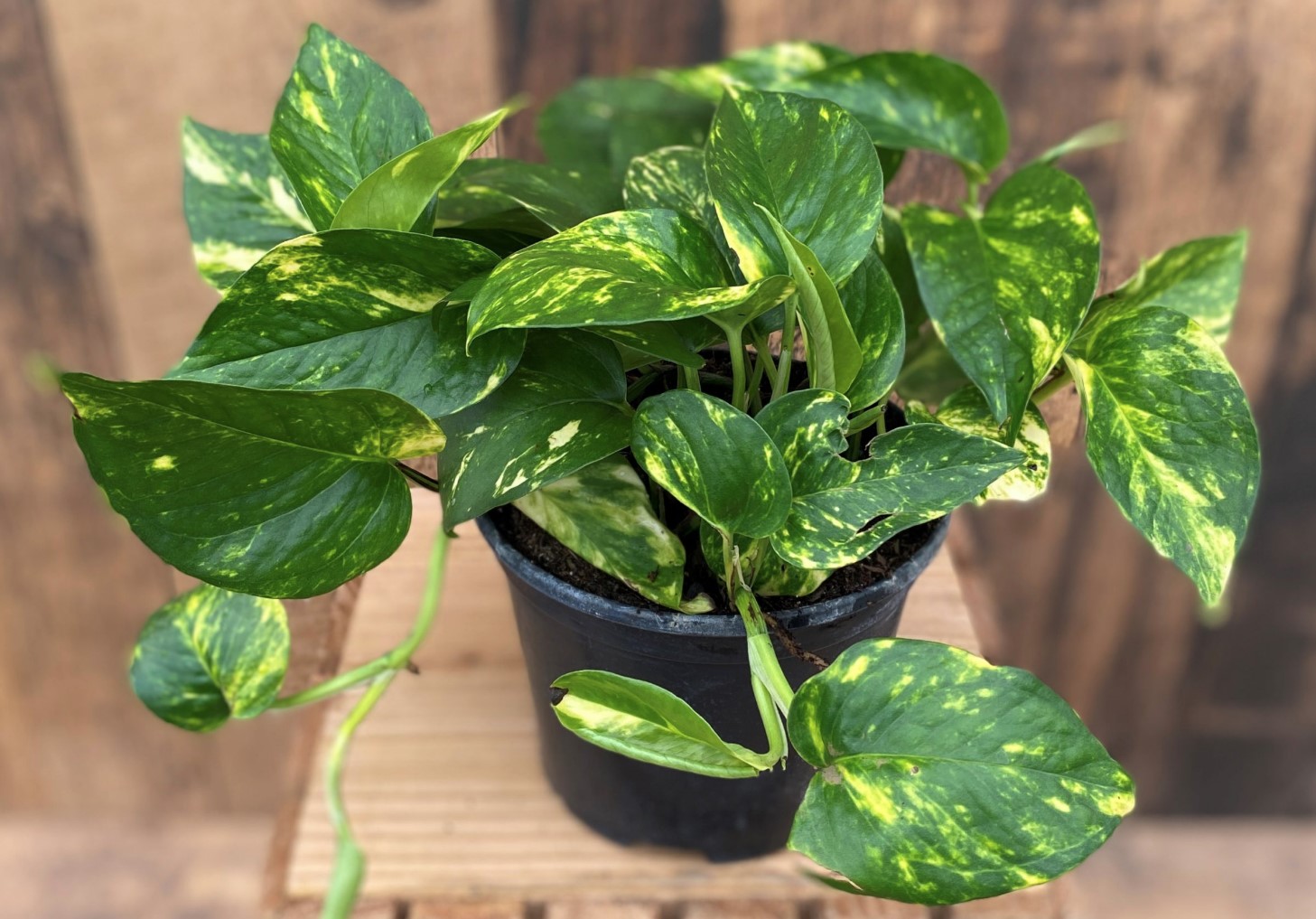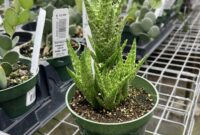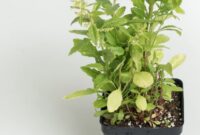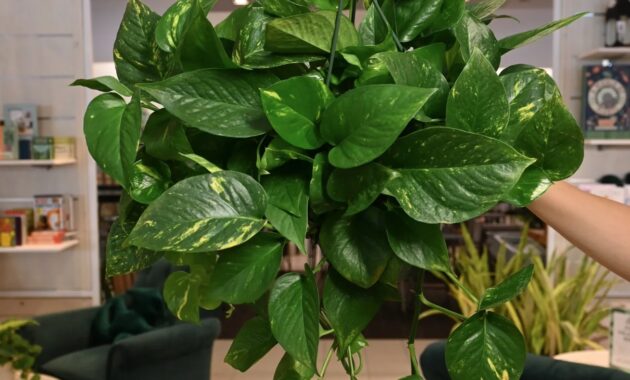
Golden Pothos, also known as Devil’s Ivy or Money Plant, is a popular indoor plant renowned for its vibrant foliage and easy care. Its trailing vines adorned with heart-shaped leaves, often variegated in shades of green and yellow, make it a beautiful addition to any home or office.
What is Golden Pothos?
Golden Pothos is a tropical vine native to the Solomon Islands. It’s a hardy plant that can thrive in various indoor conditions, making it an ideal choice for beginners.
How to Grow Golden Pothos
1. Choosing the Right Pot:
Select a pot with drainage holes to prevent waterlogging. The pot size should be slightly larger than the root ball.
2. Preparing the Soil:
Use well-draining potting mix. A mixture of peat moss, perlite, and orchid bark works well.
3. Planting:
Gently remove the plant from its nursery pot and place it in the new pot. Fill the pot with the prepared soil, ensuring the plant is firmly rooted.
4. Watering:
Water your Golden Pothos thoroughly, allowing excess water to drain. Let the top inch of soil dry out between waterings. Overwatering can lead to root rot.
5. Lighting:
Golden Pothos can tolerate low light conditions but thrives in bright, indirect light. Avoid direct sunlight, as it can scorch the leaves.
6. Temperature:
The ideal temperature range for Golden Pothos is between 65°F and 75°F (18°C and 24°C).
Golden Pothos Plant Care Tips
- Fertilizing: Feed your Golden Pothos with a balanced liquid fertilizer diluted to half strength once a month during the growing season.
- Pruning: Prune your Golden Pothos regularly to maintain its shape and encourage bushier growth.
- Propagation: Propagate your Golden Pothos through stem cuttings. Simply cut a stem with a few nodes, place it in water or soil, and wait for roots to develop.
- Repotting: Repot your Golden Pothos every 1-2 years or when the roots become pot-bound.
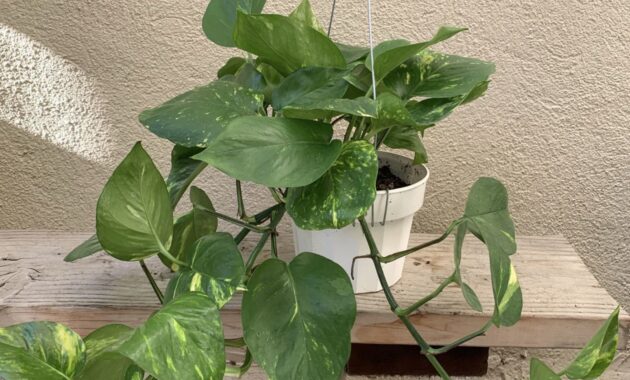
Common Golden Pothos Problems and Solutions
- Yellowing Leaves: This can be caused by overwatering, underwatering, or nutrient deficiency. Adjust your watering schedule and consider fertilizing.
- Brown Leaf Tips: This is often a sign of low humidity or underwatering. Increase humidity by misting the leaves or using a humidifier.
- Pests: Mealybugs and spider mites can infest Golden Pothos. Treat them with insecticidal soap or neem oil.
Golden Pothos Benefits
- Air Purification: Golden Pothos is an excellent air purifier, removing toxins like formaldehyde and benzene from the air.
- Low Maintenance: It’s a forgiving plant that can tolerate neglect.
- Aesthetic Appeal: Its vibrant foliage adds a touch of greenery to any space.
Golden Pothos Varieties
- Golden Pothos: The classic variety with green and yellow variegated leaves.
- Marble Queen Pothos: A stunning variety with creamy white and green marbling.
- Neon Pothos: A vibrant variety with bright neon green leaves.
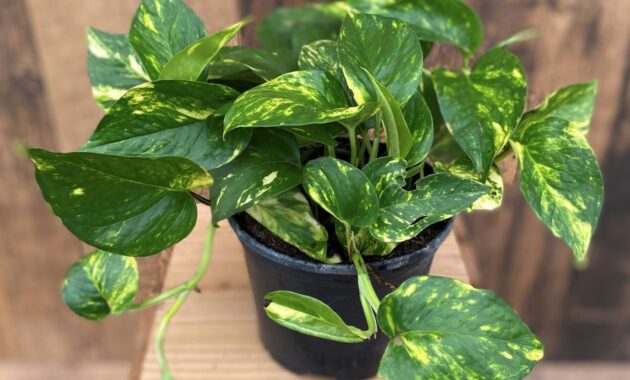
Golden Pothos Toxicity to Pets
While Golden Pothos is a beautiful plant, it is toxic to cats and dogs. Ingestion can cause oral irritation, excessive drooling, and difficulty swallowing.
Conclusion
Golden Pothos is a versatile and low-maintenance indoor plant that can bring life to any space. With proper care, it can thrive for years to come.
FAQs
- How often should I water my Golden Pothos?
Water your Golden Pothos once a week, or when the top inch of soil feels dry. Adjust the frequency based on the humidity and temperature in your home. - Can I grow Golden Pothos in water?
Yes, Golden Pothos can be grown in water. Simply place a stem cutting in a vase or jar with water and change the water every few weeks. - Why is my Golden Pothos not growing?
Lack of light, insufficient nutrients, or overwatering can hinder growth. Ensure your plant receives adequate light and fertilize it regularly. - Can I train my Golden Pothos to climb?
Yes, you can train your Golden Pothos to climb a moss pole or trellis. Simply tie the vines to the support as they grow. - How can I prevent my Golden Pothos from becoming leggy?
To prevent legginess, provide your Golden Pothos with adequate light. You can also prune leggy stems to encourage bushier growth.
